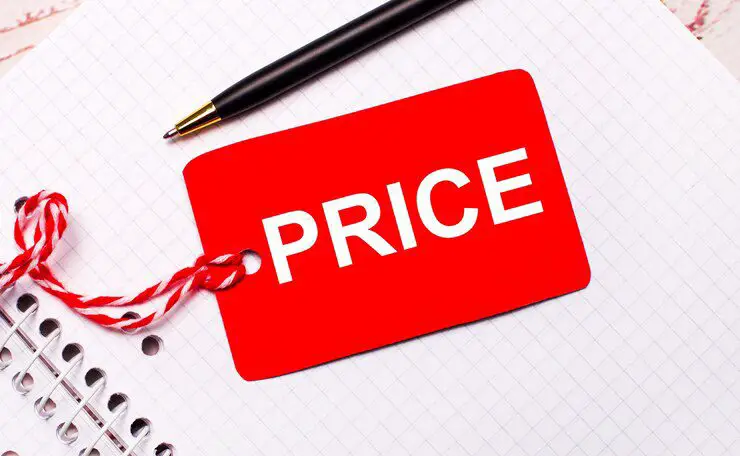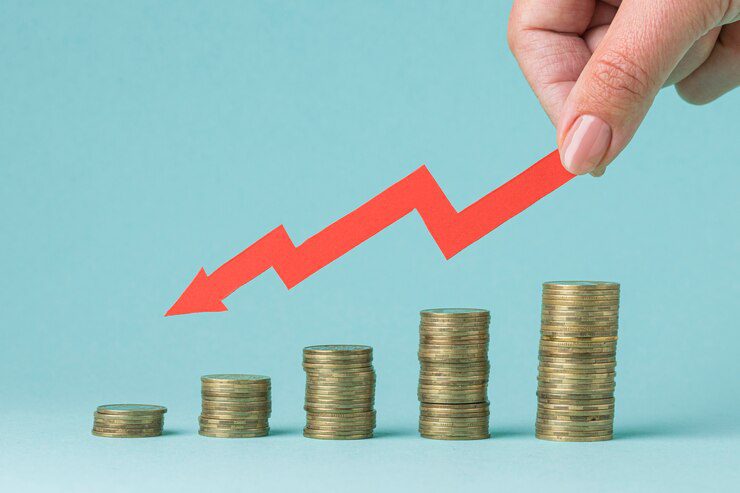Hey there, Startup Ninjas! Are you curious about the magical world of pricing? At InsiderBlog.co.uk, we’re like your friendly guides, here to help you unlock the secrets of pricing your products for profit.
Imagine your products are like shiny gems, and you’re trying to find the perfect price tag to show how valuable they are. But pricing isn’t always easy. It’s like a puzzle where you need to find the right pieces to make a beautiful picture.


That’s why we’re here to help you, Startup Ninjas! We’ll show you how to find the sweet spot – a price that makes your customers happy and helps your business grow bigger and stronger.
So, grab your calculators and your thinking caps, and get ready to dive into the exciting world of pricing! With our how to price your products tips, you’ll be a pricing pro in no time. Let’s turn those pricing puzzles into pricing triumphs!
Pricing Perfection!
- Know your costs: Just like counting all the coins in your piggy bank, you need to know how much it costs to make your product.
- Find your break-even point: This is like figuring out how many lemonade cups you need to sell to make back the money you spent on lemons and sugar.
- Set a profit margin: This is like deciding how much extra money you want to make from each lemonade cup you sell.
- Know your customers: Just like knowing which of your friends like lemonade the most, you need to know who your ideal customers are.
- Explore different pricing models: Just like choosing different flavors for your lemonade, you can explore different ways to price your product.
- Use pricing calculators and tools: These are like special tools that help you find the perfect price for your lemonade.
- Don’t underprice your product: Just like not giving away your lemonade for free, you need to make sure you’re charging a fair price.
- Keep an eye on your prices: Just like checking if your lemonade is too sweet or too sour, you need to review and adjust your prices regularly.
Understanding the Importance of Effective Product Pricing
Product pricing is very important for any business. It’s about finding the right price to make money and please customers. Knowing how to price products well is key to a company’s success.
Product Pricing and Its Impact on Business Success
Pricing affects how much money a company makes. Businesses need to set prices that cover their costs and are still competitive. The right price can help a company grow and make more money.
Balancing Customer Demand and Profit Margins
Setting the right price is all about knowing what customers want and what the market is like. Companies must find a balance between prices that customers like and profits that keep the business going. This balance depends on many things, like what others charge and how much customers think something is worth.
“Price is what you pay. Value is what you get.” – Warren Buffett.
How to Price Your Products
Pricing your products can be tricky. But, with a clear plan, you can set prices that make you money and please your customers. We’ll show you seven simple steps to price your products right.
- Understand Your Costs: First, look at all your costs. This includes both direct and indirect costs. Knowing this helps you figure out the lowest price you can charge.
- Calculate Your Cost of Goods Sold (COGS): Next, find out your COGS. This tells you how much it costs to make each product.
- Determine Your Break-Even Point: Then, find out when you’ll start making money. This is when your sales cover all your costs.
- Set Your Target Profit Margin: Look at what others in your field make. Choose a profit margin that fits your goals and what your product is worth.
- Identify Your Target Market: Know who you’re selling to. This helps you price your products right for them.
- Analyze Pricing Models and Strategies: Look at different ways to price your products. Choose the one that works best for you.
- Use Pricing Calculators and Tools: Use online tools to help you price your products. They make sure you’re making smart choices.
By following these steps, you can create a pricing plan that works for you and your customers. This will help your products do well and make you money.
Step 1: Understand Your Costs


Before you can set a price for your product, you need to know all the costs. This includes direct costs like materials and labor. It also includes indirect costs like overhead and administrative expenses. Knowing these costs helps you figure out the minimum price to charge.
Direct and Indirect Costs
Direct costs are linked directly to making your product. This includes raw materials, labor, and more. Indirect costs are not directly tied to production but are needed to run your business. Examples are rent, utilities, insurance, and salaries for admins.
Variable and Fixed Costs
It’s also key to know the difference between variable and fixed costs. Variable costs change with how much you produce, like materials and labor. Fixed costs stay the same, like rent and equipment upkeep. Knowing both helps you see the real cost of making your product.
By understanding and calculating your costs, you can set a price that covers expenses and makes a profit. This knowledge is vital for a good pricing strategy.
Step 2: Calculate Your Cost of Goods Sold (COGS)
Knowing your cost of goods sold (COGS) is key to setting prices that make you money. COGS includes the direct costs of making your products. This includes the cost of raw materials, labor, and other expenses that change with production.
To figure out your COGS, think about a few things:
- Beginning inventory: The value of goods you had at the start of the period.
- Purchases: The cost of materials and goods you bought to make products.
- Ending inventory: The value of goods left at the end of the period.
The COGS formula is simple:
- Beginning Inventory + Purchases – Ending Inventory = Cost of Goods Sold
Tracking and calculating your COGS helps you set prices right. This way, your products are priced well and you make a good profit. Remember, COGS is very important for your business’s success. Keep a close watch on it.
Step 3: Determine Your Break-Even Point
Finding your break-even point is key to pricing your products right. It’s the sales amount where your business covers all costs and makes a profit. Knowing this helps you see how much you need to sell to start earning money.
Calculating the Break-Even Point
To find your break-even point, divide your fixed costs by your profit margin. This shows the minimum units you must sell to break even. Here’s how:
- If your fixed costs are $10,000 a month and your profit margin is 50%, you need to sell 20,000 units. ($10,000 ÷ 0.50 = 20,000 units)
- This means selling at least 20,000 units to cover costs and start making a profit.
Knowing your break-even point is vital for setting the right profit margin and cost analysis. It helps you decide on the best break-even point and pricing strategy.
Step 4: Set Your Target Profit Margin
Finding the right profit margin is key to pricing your products well. Your target profit margin is how much profit you want to make on each sale. It depends on many things like what others charge, how much your product is worth, and the market.
Industry Standard Profit Margins
It’s important to know the usual profit margins in your field. Profit margins vary a lot between industries. Knowing the usual range for your business is crucial.
Most industries aim for a 10% profit margin. A high goal is about 20%. By aiming for these, you keep your prices fair and your business strong.
To figure out your target profit margin, use this formula: Product Price = Product Cost / (1 – Target Profit Margin). This helps you find the best price for your product, including your profit.
It’s important to check and change your target profit margin often. Markets and costs can change. By keeping up with trends and what customers want, you can keep your prices right and your business growing.
Step 5: Identify Your Target Market


Finding out who to sell to is key to setting good prices. Knowing what your customers like and how much they can pay helps a lot. Look at things like age, money, where they live, and how they shop to price right.
Understanding Customer Demographics and Preferences
Looking into who your customers are can really help. Think about:
- Age: Young people might watch prices more, while older folks might pay more for quality.
- Income Level: Richer people might be okay with higher prices, but poorer ones might not.
- Location: Prices can change based on where you are, like cost of living or local competition.
- Purchasing Habits: See if your customers buy on impulse or do lots of research first.
Knowing what your market likes helps you price things right. This can make more sales and help your business grow.
Doing market research, like surveys and looking at what others do, helps a lot. It shows you what your customers want and how much they’re willing to pay. This info is super useful for setting prices that your customers will like and that fit your business goals.
Step 6: Study Pricing Models and Strategies
Understanding pricing models and strategies is key. Each industry has its own pricing rules. It’s important to learn these to find the right price for your products.
There are many pricing models like markup and price skimming. Studying these can help you set prices that make you money and please customers.
Pricing strategies are also crucial. They look at things like how much you want to make and who you’re selling to. Popular strategies include setting prices based on what others charge and pricing based on value.
Doing regular pricing checks can help you find ways to improve. Look at what others charge and what customers think. Using pricing tools can also give you good ideas.
Knowing a lot about pricing can help you set prices that work well. By always learning and improving, you can make sure your prices are good for business and customers.
Step 7: Use Pricing Calculators and Tools


Pricing calculators and tools are very helpful when setting prices for your products. They look at many things like your costs and what others are charging. This helps you find the best price for your items.
These tools are great because they consider your costs. This includes things like materials, labor, and shipping. They help you figure out how much to charge to make a good profit.
But remember, these tools are just the beginning. You also need to think about your product’s quality and what customers think. If your product is better than others, you might be able to charge more.
To really know what customers are willing to pay, do some market research. Ask at least 20 people to try your product at different prices. This will give you good ideas for your pricing.
Even though pricing tools are very helpful, they’re not the only thing to consider. Mix what you learn from these tools with your own knowledge and what customers say. This way, you’ll find the perfect price for your products.
Step 8: Understanding How Price Affects Demand
Price and demand are closely linked in economics. If a product’s price goes up, people want it less. If the price goes down, they want it more. This change is called the price elasticity of demand.
Some products change more with price changes than others. This is because of their price elasticity of demand.
Price Elasticity of Demand
Knowing how price and demand relate is key for pricing. Some products, like luxury goods, change a lot with price. Others, like essentials, change less.
By understanding your product’s price elasticity of demand, you can set better prices. This helps meet customer needs and keep profits up.
Case Study: Apple’s iPhone Pricing Strategy
Apple’s iPhone pricing shows how price affects demand. In 2007, Apple cut the iPhone’s price by $200 just two months after it came out. The first iPhone was $599 for 8GB, but then it was $399.
This price drop upset some early buyers. But it made the iPhone very popular. It became one of the top smartphones.
Step 9: Competitor Research and Pricing Analysis
It’s key to know your local and online rivals when setting prices. Look at what they charge, what makes their products special, and what customers say. This helps you price right, keeping profits up while staying competitive.
Local and Online Competition
Checking out what others charge is common in sales-heavy fields. Online stores often tweak prices to stay ahead. By studying rivals, you can avoid losing money and grow your share of the market.
Assessing Competitor Pricing Strategies
Study how your competitors price their stuff. See if they use value, penetration, or economy pricing. Use this to make your product stand out and meet what customers want.
Doing a price check can keep customers from going to others. Make sure to compare similar products or services. Look at both in-store and online prices to get a full picture.
- Competitive pricing analysis is key for your market spot and marketing plan.
- Changing prices based on what others do helps you stay ahead and find their weak spots.
- Think long-term with your pricing strategy to stay competitive.
Step 10: A/B Testing Your Pricing Strategy
Finding the right price for your products can be hard. A/B testing helps a lot. It lets you try different prices and see which one works best.
By testing two prices at once, you can see which one people like more. This helps you find the best price for your products. It makes sure you make more money without upsetting customers.
But, be careful with A/B testing. Some say not to change prices too often. It might seem unfair or could get you in trouble with the law.
To test prices well, follow these tips:
- Choose two similar products or plans for fair testing.
- Look at how much money you make, not just how many people buy, to judge success.
- Keep trying new prices to find the perfect one for your business.
- Use other methods like the Van Westendorp Price Sensitivity Meter (PSM) to learn more about what customers want.
By using A/B testing wisely, you can make your pricing better. This helps your business grow in a good way.
Step 11: Avoid the Pitfalls of Underpricing


It might seem good to sell things cheap to get more customers. But, this can hurt your business’s money and future. Selling too low can cut down your profits and make it hard to pay for things.
Also, selling things too cheap can make people think they’re not worth much. This is especially true in places where price and quality are linked. If people get used to low prices, they might always want discounts. This can hurt your money too.
Some businesses sell things cheap because they look at what others charge. But, it’s key to find a good price that makes you money. If you don’t show what makes your stuff special, people might not see its value.
To avoid selling things too cheap, keep checking and changing your prices. Look at the market, what people want, and how much it costs you. Using smart pricing can help you keep prices good and make money.
Remember, how much you charge is very important for your business. It should work with your money, marketing, and how you run things. By setting prices right, you can keep customers happy, show your stuff’s worth, and make money for a long time.
Step 12: Regularly Review and Adjust Your Pricing


It’s very important to check and change your pricing often. The market, costs, and what customers want can change a lot. You need to adjust your prices to stay profitable and competitive.
Watching pricing trends and looking at what competitors do is key. Also, knowing when customers want things more or less helps you make good price changes.
Checking your prices often lets you raise them when it’s good. But, you should lower prices if costs go down or if customers are more price-conscious. This keeps your products priced right for profit and value.
When you change prices, tell your customers why. Say it’s because of higher costs or because others are charging more. This keeps trust and stops upset from price hikes.
Regularly checking and changing prices is a big part of a good pricing plan. It helps reach your business goals.
Price Your Products Like a Pro!
Wow, Startup Ninjas! We’ve been on an amazing journey through the exciting world of pricing. We’ve learned so much, it’s like we’ve unlocked a treasure chest full of pricing secrets!
We talked about how important it is to understand our costs, just like counting all the coins in our piggy bank. We also learned how to find our break-even point, like figuring out how many cookies we need to sell to make back the money we spent on ingredients. And guess what? We even discovered how to set a profit margin, like deciding how much extra money we want to earn from each cookie we sell!
But here’s the most important thing: pricing is an ongoing adventure. It’s like riding a bike – we need to keep practicing and adjusting to stay balanced and reach our destination.
At InsiderBlog.co.uk, we’re here to cheer you on as you navigate the exciting world of pricing. We’ll always be here to provide you with the best tips and tricks to help you find the perfect price for your products.
So, go out there and price your products like a pro! Remember to be confident, be flexible, and most importantly, have fun! The perfect price is out there waiting for you, just like a hidden treasure waiting to be discovered.
Frequently Asked Questions
1. Why is pricing so important for my business?
Pricing is like choosing the right amount of sprinkles for your ice cream cone. Too few, and it’s not as yummy. Too many, and it’s messy and might cost too much! The right price makes everyone happy.
2. What are the different types of costs I need to consider?
There are two types of costs: direct and indirect. Direct costs are like the ingredients for your ice cream. Indirect costs are like the electricity to keep your freezer running.
3. What is COGS?
COGS is like figuring out how much each scoop of ice cream costs you to make. This helps you know how much to charge for your ice cream cone.
4. What is a break-even point?
The break-even point is like figuring out how many ice cream cones you need to sell to make back the money you spent on ingredients and your freezer.
5. How do I set a target profit margin?
Setting a target profit margin is like deciding how much extra money you want to make from each ice cream cone you sell.
6. Why is it important to know my target market?
Knowing your target market is like knowing if your friends like chocolate or vanilla ice cream better. This helps you choose the right flavors to sell.
7. What are some different pricing models and strategies?
Different pricing models and strategies are like different ways to sell your ice cream. You could sell single scoops, double scoops, or even sundaes with lots of toppings!
8. What are some pricing calculators and tools I can use?
Pricing calculators and tools are like special calculators that help you figure out the best price for your ice cream cones.
Hey Startup Ninjas, now that you’re pricing experts, it’s time to put your newfound skills to the test! Go out there and price your products with confidence, knowing that you’ve got the tools and knowledge to make your business a success. Don’t forget to share your pricing journey with your friends and fellow entrepreneurs, and be sure to visit InsiderBlog.co.uk for more exciting tips and tricks. Let’s make the business world a more profitable and exciting place, one perfectly priced product at a time!
Source
- Linnworks. (n.d.). How to price your products in 7 easy steps + what to consider. Linnworks. Retrieved from https://www.linnworks.com/blog/how-to-price-your-products-in-7-steps/
- GoDaddy. (n.d.). How to price products — 7 competitive pricing strategies to make a profit. GoDaddy. Retrieved from https://www.godaddy.com/resources/skills/how-to-price-products
- Shopify. (2024). How to price a product in 3 simple steps. Shopify. Retrieved from https://www.shopify.com/blog/how-to-price-your-product
- U.S. Chamber of Commerce. (n.d.). How to price your product. Retrieved from https://www.uschamber.com/co/start/strategy/how-to-price-your-product
- BDC. (n.d.). How to set the right price for your products or services. BDC. Retrieved from https://www.bdc.ca/en/articles-tools/marketing-sales-export/marketing/steps-setting-right-price-your-products-services
- Launch Grow Joy. (n.d.). How to price your products – with a free pricing calculator. Launch Grow Joy. Retrieved from https://www.launchgrowjoy.com/how-to-price-your-products/
- ShipBob. (n.d.). How to price your products in 6 steps. ShipBob. Retrieved from https://www.shipbob.com/blog/product-pricing-online/
- POS Nation. (n.d.). How to price a product for retail: 5 steps to success. POS Nation. Retrieved from https://www.posnation.com/blog/how-to-price-a-product-for-retail
- Investopedia. (n.d.). Cost of goods sold (COGS) explained with methods to calculate it. Investopedia. Retrieved from https://www.investopedia.com/terms/c/cogs.asp
- HubSpot. (n.d.). How to calculate cost of goods sold in your business. HubSpot. Retrieved from https://blog.hubspot.com/sales/cost-of-goods-sold
- Wall Street Prep. (n.d.). Break even point (BEP) | Formula + calculator. Wall Street Prep. Retrieved from https://www.wallstreetprep.com/knowledge/break-even-point/
- FreshBooks. (n.d.). How to calculate the break-even point. FreshBooks. Retrieved from https://www.freshbooks.com/hub/accounting/calculate-break-even-point
- Mailchimp. (n.d.). How to price your products to turn a profit. Mailchimp. Retrieved from https://mailchimp.com/resources/how-to-price-your-products-to-turn-a-profit/
- Shopify. (n.d.). Pricing your products. Shopify. Retrieved from https://help.shopify.com/en/manual/products/details/product-pricing/determine-pricing
- Shopventory. (n.d.). How to price a product: 6 strategies for setting a price tag. LinkedIn. Retrieved from https://www.linkedin.com/pulse/how-price-product-6-strategies-setting-tag-shopventory-1c
- F34TE, S. (n.d.). How to price your products and services to win customers and boost profits. LinkedIn. Retrieved from https://www.linkedin.com/pulse/how-price-your-products-services-win-customers-boost-profits-susana-f34te?trk=organization_guest_main-feed-card_feed-article-content
- DevriX. (n.d.). The complete guide to finding your target market + infographic. DevriX. Retrieved from https://devrix.com/tutorial/complete-guide-finding-target-market/
- BDC. (n.d.). The 5 most common pricing strategies. BDC. Retrieved from https://www.bdc.ca/en/articles-tools/marketing-sales-export/marketing/pricing-5-common-strategies
- HubSpot. (n.d.). The ultimate guide to pricing strategies & models. HubSpot. Retrieved from https://blog.hubspot.com/sales/pricing-strategy
- ProductPlan. (n.d.). How to price a product in 5 steps. ProductPlan. Retrieved from https://www.productplan.com/learn/how-to-price-a-product/
- Online Labels. (n.d.). How to price a product [free calculator & formulas]. Online Labels. Retrieved from https://www.onlinelabels.com/articles/a-guide-to-small-business-product-pricing?srsltid=AfmBOooxYd3uZKONipQ5nvb2czkI29ZqaSc3MsHZ7Fcl9lBbvjGFZiWy
- Fit Small Business. (n.d.). How to price a product in 5 steps (+ profit calculators). Fit Small Business. Retrieved from https://fitsmallbusiness.com/product-pricing/
- Investopedia. (n.d.). How does the law of supply and demand affect prices? Investopedia. Retrieved from https://www.investopedia.com/ask/answers/033115/how-does-law-supply-and-demand-affect-prices.asp
- Healy, M. (n.d.). Demand and supply. Harper College. Retrieved from http://www2.harpercollege.edu/mhealy/eco212i/lectures/s&d/s&d.htm
- Pricing Society. (n.d.). How to price products. Pricing Society. Retrieved from https://www.pricingsociety.com/post/how-to-price-products
- Qualtrics. (n.d.). Competitive pricing analysis: How to beat out the competition. Qualtrics. Retrieved from https://www.qualtrics.com/experience-management/product/competitive-pricing-analysis/
- Symson. (n.d.). Conduct a competitive pricing analysis in 5 steps for a robust competitive pricing strategy. Symson. Retrieved from https://www.symson.com/blog/competitive-pricing-analysis-5-steps-for-a-competitive-pricing-strategy
- Competitive Intelligence Alliance. (n.d.). How to do a competitive pricing analysis (with examples). Competitive Intelligence Alliance. Retrieved from https://www.competitiveintelligencealliance.io/how-to-do-competitive-pricing-analysis/
- Convert. (n.d.). A/B testing pricing – Is it legal and ethical? Can it help you find the right pricing strategy? Convert. Retrieved from https://www.convert.com/blog/shopify-ab-testing/shopify-price-testing-guide/
- HubSpot. (n.d.). How to A/B test your pricing (and why it might be a bad idea). HubSpot. Retrieved from https://blog.hubspot.com/marketing/price-testing
- PriceSpace. (n.d.). How to avoid the pitfalls of underpricing. PriceSpace. Retrieved from https://www.pricespace.com/blog/how-to-avoid-the-pitfalls-of-underpricing
- Paper & Spark. (n.d.). Pricing pitfalls for online sellers. Paper & Spark. Retrieved from https://paperandspark.com/pricing-pitfalls/
- LinkedIn. (n.d.). How can you avoid common pricing pitfalls? LinkedIn. Retrieved from https://www.linkedin.com/advice/1/how-can-you-avoid-common-pricing-pitfalls-skills-entrepreneurship
- Better Proposals. (n.d.). Product pricing 101: Set the perfect price for your product. Better Proposals. Retrieved from https://betterproposals.io/blog/product-pricing/
- Prisync. (2024). Pricing for profit: How to price a product in simple steps [2024]. Prisync. Retrieved from https://prisync.com/blog/pricing-for-profit-how-to-price-a-product-in-simple-steps-2023/
Was this helpful?
Yay! 🎉 You made it to the end of the article!
















